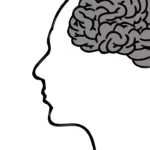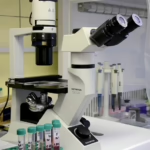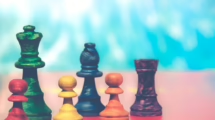Unlocking the Secrets of Math: Innovative Solutions to Age-Old Problems
Mathematics has long been regarded as the language of the universe, a fundamental tool we use to understand and describe the world around us. Unfortunately, it is often perceived as a dusty collection of formulas and rules, alienating many who might otherwise find beauty and utility in its principles. However, throughout history, innovative thinkers have dedicated themselves to finding solutions to age-old mathematical problems, unlocking new avenues of knowledge and shaping our understanding of the discipline. In this article, we will explore some of these problems, the cutting-edge methods applied to tackle them, and their implications for the future of mathematics.
The Riddle of Prime Numbers
Prime numbers—the building blocks of the number system—have captivated mathematicians for centuries. Their distribution appears to be erratic, yet they hold the key to numerous applications, especially in cryptography. One of the age-old problems related to primes is the Prime Number Theorem, which describes the asymptotic distribution of prime numbers.
Innovative Solutions: The Riemann Hypothesis
One of the most famous unsolved problems in mathematics, the Riemann Hypothesis, postulates a deep connection between the zeros of the Riemann zeta function and the distribution of prime numbers. Conclusively solving this hypothesis would not only clarify many lingering questions about prime distribution but also provide a conceptual framework for understanding primes within more complex number systems. Recent advancements in computational mathematics and analytic number theory have empowered researchers to probe deeper into this hypothesis, offering new insights and approaches that may eventually lead to its resolution.
Graph Theory and the Four Color Theorem
The Four Color Theorem asserts that, given any separation of a plane into contiguous regions, no more than four colors are required to color the regions so that no two adjacent regions share the same color. This theorem remained a conjecture for over a century until it was finally proven using computer-assisted methods in 1976.
Innovative Solutions: The Era of Computational Mathematics
The advent of computer technology revolutionized the methodological landscape of mathematics, particularly for problems too complex for manual calculations. Utilizing algorithms and the immense power of computational resources, researchers can now tackle problems like the Four Color Theorem with unprecedented efficiency. This innovation heralds new techniques in proving theorems, ultimately enriching our understanding of complex structures in combinatorics and graph theory.
Fermat’s Last Theorem
Fermat’s Last Theorem, proposed in the 17th century, states that there are no three positive integers (a), (b), and (c) that can satisfy the equation (a^n + b^n = c^n) for any integer value of (n) greater than two. Despite its simplicity, the theorem remained unsolved for over 350 years until Andrew Wiles finally proved it in 1994.
Innovative Solutions: Modular Forms and Elliptic Curves
Wiles’s groundbreaking proof intertwined various mathematical concepts, particularly two crucial areas: modular forms and Elliptic curves. By connecting these disparate domains in innovative ways, Wiles was able to construct a proof that not only resolved Fermat’s Last Theorem but also advanced several other fields in number theory. Wiles’s achievements have inspired a generation of mathematicians to explore previously uncharted territories in mathematics, merging disparate fields into a unified understanding.
The Quest for a Unified Theory: P vs. NP Problem
The P vs. NP Problem remains one of the seven Millennium Prize Problems set by the Clay Mathematics Institute, challenging mathematicians to discern whether every problem whose solution can be verified quickly (NP) can also be solved quickly (P).
Innovative Solutions: Advances in Computational Complexity
Recent investigations into computational complexity have explored the interconnections between various complexity classes, leading to innovative algorithms and heuristic approaches. Concepts such as machine learning are playing an increasingly significant role in tackling hard problems, providing fresh insights and directions. The synergy between computer science and mathematics in addressing the P vs. NP problem has vast implications, potentially reshaping the fields of cryptography, artificial intelligence, and optimization.
Conclusion
Mathematics is a dynamic field rather than a static repository of knowledge. The quest to solve age-old problems reflects the innovative spirit of human inquiry, uniting concepts and tools from multiple domains. As we unlock the secrets of math, we not only enhance our understanding of numbers and structures but also equip ourselves with solutions to real-world challenges. Each innovation provides a glimpse into the potential for future discoveries and encourages subsequent generations to explore the intricacies of mathematics. Ultimately, the beauty of mathematics lies not just in the answers it offers, but in the questions it inspires, prompting us to delve into the profound enigmas of existence.
This article invites readers to engage with the ongoing journey of mathematical discovery. As we stand on the shoulders of giants, the possibilities for new insights and solutions continue to expand, promising a future where mathematics remains as relevant and enchanting as ever.


























Add Comment